Now Reading: Top 5 Best Places Visiting in Rewa – Forts, Waterfalls & Cultural Sites
-
01
Top 5 Best Places Visiting in Rewa – Forts, Waterfalls & Cultural Sites

Top 5 Best Places Visiting in Rewa – Forts, Waterfalls & Cultural Sites
1.Piyavan
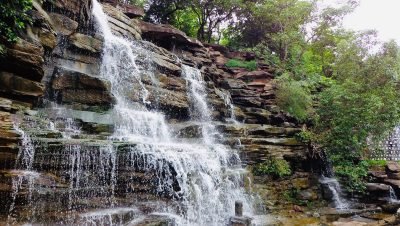
The scenic destination named Piavan occupies the center of Madhya Pradesh where history combines with nature and spiritual ambiance. In the Bardaha Valley of Sirmaur district near Rewa district lies this incredible site at a distance of 42 km which attracts both travelers and devotees through its peaceful environment and enchanting natural landscape.
The exceptional quality of Piavan exists in its extraordinary geological design. The Dham sits at a depth of 200 feet below ground and expands like a wide swath across 800 feet while nature protective plains and impressive cliffs enclose it. The center of this sacred site houses a pure white waterfall which maintains a natural stream throughout every month thus providing an opportunity for devotees to bathe Lord Bholenath (Shiva). Visitors should prioritize experiencing this site because its waterfall provides soothing sights and sounds to visitors.
Every summer between July and September a special natural phenomenon occurs beneath the surface that combines two breathtaking waterfalls in one location. The combined power of white water streams through the valley in a mesmerizing way forms a remarkable scene that maintains both an exhilaration and serenity simultaneously.
2.Purwa WaterFall

Located within the difficult terrain of the Rewa Plateau the Purwa Waterfall showcases both natural force and unadulterated aesthetics. Their height reaches an impressive 200 feet (approximately 67 meters) making these falls mesmerize visitors through their thunderous roar and enormous water flow.
A dramatic drop from the plateau edge sends the River Toans’ water down into a scene that stirs both excitement and respect within viewers. The powerful waterfall creates an amazing sight when it plunges through the air down to the bottom of the gorge.
Purwa earns distinction as special because it undergoes annual transformations. The waterfall expresses its maximum banquet of beauty tospectators during monsoon months because of the extensive rainfall. The tremendous water volume elevates while surrounding greenery shines vibrantly during monsoon season which is a perfect moment for nature enthusiasts and photographers to view the waterfall in its remarkable state.
Like other natural phenomena Purwa Waterfall follows its unique pattern of operation. The stream calms down outside the rainy period delivering a peaceful and less powerful appearance to visitors.
3.Bahuti WaterFall
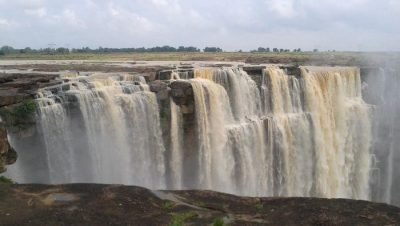
The tallest waterfall of Madhya Pradesh rests against the state’s rough terrains southwest of the region. This natural wonder stands regal at 198 meters (650 feet) above the ground where its waters flow dramatically downward from the cliff until they reach the valley.
Geological Significance
Bahuti Falls exists as both an aesthetic attraction and a scientific geological feature. Bahuti Waterfall showcases a perfect nick point structure that occurred because of river rejuvenation processes.
A nick point describes a slope modification break which forms through tectonic uplift or reduced sea level. A rejuvenated river brings sudden river flow power that triggers vertical erosion along with a rapid depth decrease in the streambed. The break created by this feature allows vertical water movements which results in the formation of Bahuti waterfall.
Best Time to Visit
Bahuti Waterfall reveals its magnificent beauty most during the monsoon months of July to September because this is when water volume reaches its highest point. People can find better routes and safer paths through this area during the post-monsoon period.
4.Deur Kothar
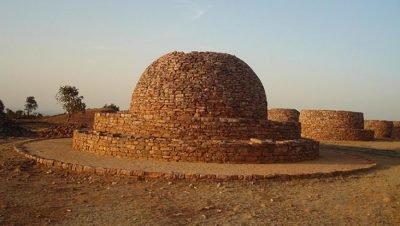
The archaeological site contains abundant historical value through its ancient Buddhist stupas that exist on the site. Archaeologists identified these Buddhist stupas during 1982 with an estimated two thousand years old origin from Ashoka’s time. Multiple stupas exist with three major structures made of clay bricks and smaller ones produced using 46 various stone types.
Five thousand years old rocky caves at Deur Kothar create a distinctive sight among its archaeological features. During the time of Ashoka Buddhism expanded its reach to the Vindhyan area by dispersing Lord Buddha’s remains to build these stupas. The prestigious Rewa tourist places contain an archaeological site known as Deur Kothar where Buddhism followers constructed stupas after its discovery.
5.Keoti WaterFall
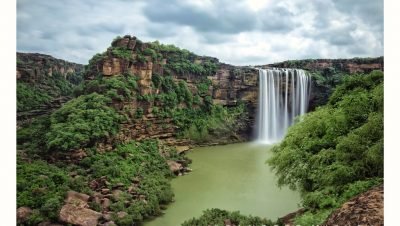
Your Rewa vacation will not be complete without visiting Keoti Waterfall because this destination provides the perfect opportunity for peaceful family fun. This majestic waterfall sits deeply enclosed by rich vegetation among natural stone features as a wondrous waterfall that provides relaxation from city pressures.
Keoti Waterfall establishes its position as the 24th tallest waterfall in India as it falls approximately 130 meters (427 feet) offering magnificent views to visitors. The water delivers tremendous force in particular by the time of monsoon when the waterfalls achieve their maximum height.
One can use Keoti Waterfall as the ideal setting for picnic outings or photography adventures or simple relaxation time. This location provides the perfect environment because its rushing water creates a peaceful sound while the fresh breeze and green landscape create an ideal spot for spending time with family and friends. Guests may find perfect relaxation along with meaningful storytelling at this wonderful location.
Best time to visit:
Monsoon and post-monsoon seasons (July to December)
Related articles : Best Places Visiting in Ratlam – Temples, Gardens & Scenic Spots
Stay Informed With the Latest & Most Important News
Previous Post
Next Post
-
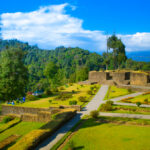 01Top 5 Best Places Visiting in Gyalshing – Monasteries, Lakes & Scenic Escapes
01Top 5 Best Places Visiting in Gyalshing – Monasteries, Lakes & Scenic Escapes -
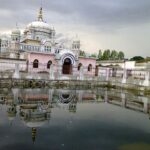 02Top 5 Best Places Visiting in Panna – Temples, Waterfalls & Wildlife Escapes
02Top 5 Best Places Visiting in Panna – Temples, Waterfalls & Wildlife Escapes -
 03Top 5 Best Places to Visit in Malerkotla – Malerkotla Fort, Sheesh Mahal & More
03Top 5 Best Places to Visit in Malerkotla – Malerkotla Fort, Sheesh Mahal & More -
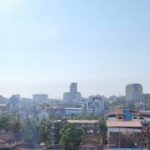 04Top 10 Best Places Visiting in Dakshina Kannad for Culture, Nature & Coastal Charm
04Top 10 Best Places Visiting in Dakshina Kannad for Culture, Nature & Coastal Charm -
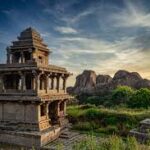 05Top 2 Best Places Visiting in Chitradurga for History, Nature & Adventure
05Top 2 Best Places Visiting in Chitradurga for History, Nature & Adventure -
 06Best Places Visiting in Shopian – Explore Top Attractions & Hidden Gems
06Best Places Visiting in Shopian – Explore Top Attractions & Hidden Gems -
 07Best Places Visiting in Narmadapuram – Temples, Waterfalls & Wildlife Escapes
07Best Places Visiting in Narmadapuram – Temples, Waterfalls & Wildlife Escapes














Pingback: Top 5 Best Places Visiting in Sagar – Forts, Waterfalls & Wildlife Sanctuaries